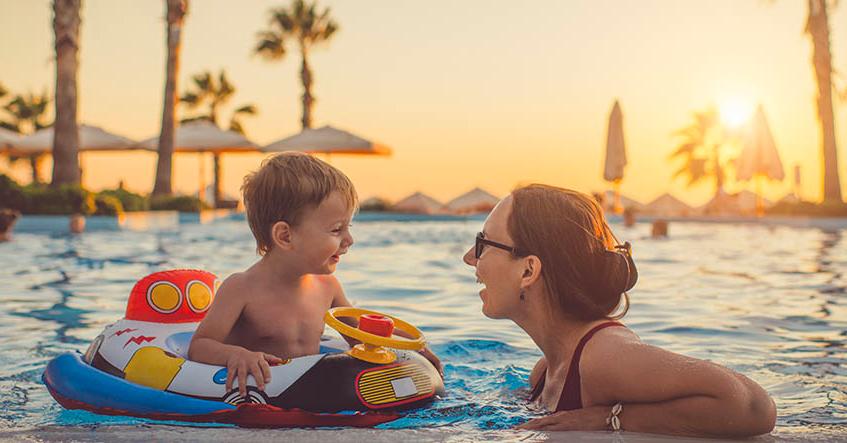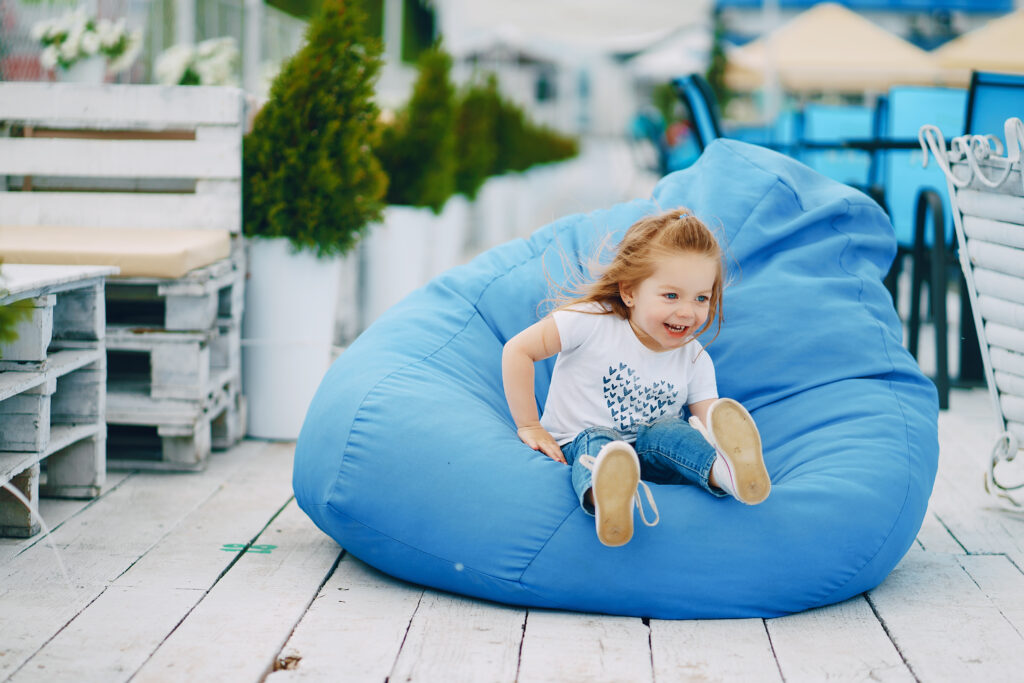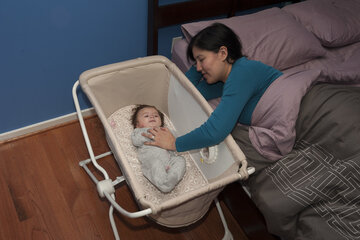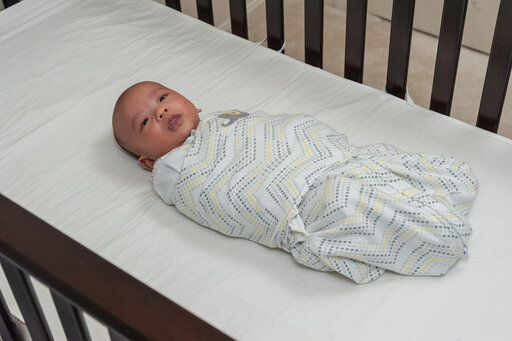
Are you thinking about traveling with your baby but unsure when can you travel with a baby? This detailed guide has all the answers to help you decide the best time to travel and how to prepare for a successful journey with your little one.
Learn when it’s safest to travel based on your baby’s age and health, whether it’s a short road trip, a long-haul flight, or a family train adventure.
We provide essential tips on packing everything you’ll need, from diapers and feeding supplies to travel-friendly toys and a first-aid kit.
Discover practical advice on maintaining your baby’s sleep and feeding schedule, choosing the most convenient mode of transport, and selecting baby-friendly destinations.
We also cover tips for keeping your baby comfortable during flights, ensuring car seat safety during road trips, and managing unexpected challenges.
Traveling with a baby doesn’t have to be stressful! With the right planning and a little flexibility, you can enjoy a smooth, enjoyable journey that creates lasting memories for your family.
Whether you’re traveling with a newborn or an older baby, this guide equips you with everything you need to make your trip comfortable, safe, and enjoyable for both you and your little one.
When Can You Travel with a Baby?
Traveling with a baby is an exciting milestone for new parents, but it comes with unique challenges that require careful planning.
Deciding when to travel largely depends on the baby’s age, health, and the type of trip. Understanding your baby’s needs and prioritizing their safety and comfort can make the journey smoother and more enjoyable.
Factors to Consider Before Traveling
Baby’s Age:
- Newborn Stage (0–2 months): During the newborn phase, babies are still adjusting to life outside the womb, and their immune systems are underdeveloped. Travel during this period is generally discouraged unless it’s necessary, such as for medical reasons or emergencies.
- 2–3 Months: By this time, most babies are more resilient, and parents may feel more confident handling short trips. However, it’s essential to keep the baby’s feeding and sleeping routines as consistent as possible.
- 6 months+: At this stage, babies are more robust, and traveling can be more enjoyable for the whole family.
Baby’s Health:
Always check with your pediatrician before traveling, especially if your baby was born prematurely, has a medical condition, or has recently been vaccinated. A doctor can provide personalized advice and ensure your baby is fit for the trip.
Type of Travel:
- Car Travel: Road trips are often the most flexible option for families with infants. Ensure the car seat is properly installed, take frequent breaks for feeding and diaper changes, and bring essentials like wipes, extra clothes, and a well-stocked diaper bag.
- Air Travel: Air travel is usually safe for healthy babies over 2 weeks old, but many experts recommend waiting until they’re at least 2–3 months old. Consider booking flights during nap times and choosing seats with extra space for added comfort.
- Public Transport: Buses and trains can be practical for short trips, but keep in mind they may lack the privacy and flexibility needed for feeding or soothing your baby.
Destination:
The choice of destination matters, too. Avoid places with extreme weather, high altitudes, or limited access to healthcare when traveling with an infant. Family-friendly destinations with amenities like clean bathrooms and nursing rooms are ideal.
Tips for a Smooth Journey
- Packing: Create a checklist to ensure you don’t forget essentials like diapers, formula or breast pump supplies, a change of clothes, baby-friendly snacks (if they’re old enough), and a small first-aid kit.
- Sleep Arrangements: Bring a travel crib or ensure your accommodations provide one. Babies sleep best in familiar environments, so consider packing a favorite blanket or sleep sack.
- Comfort and Entertainment: Bring items that comfort your baby, such as pacifiers, teething toys, or soft books. For longer trips, distractions like colorful or musical toys can help keep them calm and happy.
- Be Flexible: Babies are unpredictable, and things may not go as planned. Build extra time into your schedule for delays and be prepared to adjust to your baby’s needs on the fly.
What Is the Best Age for a Baby to Travel?

Determining the best age for a baby to travel depends on several factors, including the baby’s age, health, and the type of trip you’re planning.
Babies develop rapidly in their first year, and each stage comes with unique opportunities and challenges when it comes to travel.
Traveling with Newborns (0–2 Months)
Travel with a newborn is generally not recommended unless it’s unavoidable, such as for medical reasons or emergencies.
Additionally, their feeding and sleeping patterns are irregular, which can complicate trips. If travel is essential, short and low-stress trips are more manageable, and hygiene precautions are crucial to protect their health.
Traveling with Infants (2–6 Months)
By this time, babies may have received some vaccinations, and their feeding and sleeping schedules may be more predictable. This age is often ideal for travel as babies are small, easy to carry, and spend much of their time sleeping.
Whether it’s a short car ride or a flight, trips during this stage can be less stressful with proper preparation.
Traveling with Older Babies (6–12 Months)
As babies grow older, they become more curious, mobile, and interactive. While this makes traveling more exciting, it also presents new challenges. Babies at this stage may have more specific needs,
such as solid food, and are often harder to keep entertained during long journeys. On the positive side, they’re more resilient and adaptable, which can make family trips more enjoyable with the right planning.
What Else to Consider?
- Health and Development: Always consult your pediatrician before traveling, especially if your baby has health concerns or if you’re planning long or international trips.
- Type of Trip: A short road trip may be manageable for younger babies, while longer flights or overseas trips may be more suitable for slightly older infants.
- Your Comfort Level: The best time to travel is when you feel ready to handle the challenges of traveling with a baby, including feeding, changing diapers on the go, and maintaining a consistent routine.
With proper planning and realistic expectations, traveling with a baby can be an enjoyable experience. The key is to adapt your plans to meet your baby’s needs and ensure their safety and comfort along the way.
How Old Can a Baby Fly for Free?

Most airlines allow babies under 2 years old to fly for free or at a reduced cost if they travel as a lap infant, meaning they don’t require their seat.
This policy is commonly referred to as the “lap infant rule,” and it applies to both domestic and international flights, though the specifics vary by airline and destination.
Key Details About Flying for Free with a Baby
Age Cutoff:
Babies are eligible to fly for free as lap infants until the day they turn 2 years old. Once your child reaches their second birthday, you are required to purchase a separate seat for them, even if they are small enough to sit on your lap.
Domestic Flights:
Most airlines in the U.S. and many other countries allow lap infants to travel for free on domestic flights. However, some airlines may charge a small fee, so it’s always a good idea to check the specific policy when booking.
International Flights:
For international travel, lap infants may still qualify to fly for free, but many airlines charge taxes, fees, or up to 10% of the adult ticket price. This cost typically covers administrative fees or the baby’s share of services like meals and baggage.
Seats for Lap Infants:
While it’s not required to purchase a seat for a baby under 2, aviation safety authorities such as the FAA recommend using an FAA-approved child restraint system (CRS) for added safety.
If you choose to purchase a seat, many airlines offer discounts for infant fares.
Tips for Flying with a Lap Infant
Plan: Always inform the airline when booking tickets that you’ll be traveling with a lap infant. Some airlines may require advance notification to accommodate your baby.
Bring Proof of Age: Carry documentation, such as a birth certificate or passport, to confirm your baby’s age at check-in.
Comfort and Safety: For long flights, consider purchasing a seat for your baby to provide extra comfort. If you do, bring an FAA-approved car seat for them to use.
Boarding: Take advantage of family boarding privileges offered by many airlines to get settled in before general boarding begins.
Travel Essentials: Pack all necessary baby items, including diapers, bottles, snacks, and a favorite toy or blanket, to keep your little one comfortable and entertained.
Our Travel Plans with Our Baby
It takes careful planning, flexibility, and a bit of creativity, but it can also lead to some of the most rewarding family memories.
Whether it’s a weekend road trip, a visit to grandparents, or an overseas vacation, including your baby in your travel plans opens up a new world of experiences.
Preparing for the Journey
When can you travel with a baby, preparation is key. We make sure to plan around our baby’s needs, choosing destinations that are baby-friendly and manageable. Packing is always a big task—diapers, bottles, snacks, a change of clothes,
and toys are just the start! We also bring along travel essentials like a lightweight stroller, baby carrier, and portable crib to make the trip as smooth as possible.
Choosing the Right Destinations
Our travel plans focus on places that are family-oriented. We look for accommodations with baby amenities, easy access to healthcare, and environments
that are safe and comfortable. Beaches, parks, and quiet countryside retreats are often our top picks, but we also enjoy city breaks if they’re not too hectic.
Making the Journey Comfortable
For road trips, we plan frequent stops to allow for feeding, diaper changes, and stretching breaks. During flights, we try to schedule travel times around naps
and pack plenty of distractions like soft toys and pacifiers. Keeping our baby’s routine as consistent as possible helps ease the transition to new surroundings.
Creating Memories
Traveling with a baby can be unpredictable, but it’s also a beautiful way to bond as a family. We cherish the little moments—introducing our baby to the sound of waves,
taking photos at scenic spots, or simply enjoying quiet time together away from daily routines. Every trip, no matter how big or small, is a step in building a lifetime of shared adventures.
When Is It Safe to Fly With a Newborn?

Flying with a newborn can be daunting, but it is generally safe after a baby reaches a certain age, provided there are no medical concerns. The exact timing depends on your baby’s health, the airline’s policies, and your comfort level as a parent.
General Guidelines
Healthy, Full-Term Babies: Most airlines allow newborns as young as 2 days old to fly, but pediatricians recommend waiting until your baby is at least 2–4 weeks old,
if possible. This allows their immune system to develop slightly and gives you time to adjust to your baby’s needs.
Factors to Consider Before Flying
Baby’s Immune System: Newborns have fragile immune systems, making them more vulnerable to infections. Airplane cabins are enclosed spaces, increasing exposure to germs. Waiting a few weeks gives your baby’s body time to build some immunity.
Pediatrician Approval: Always consult your baby’s doctor before flying, especially if your baby is very young, was born prematurely, or has underlying health conditions.
Airline Policies: Some airlines have minimum age requirements for infants. While many allow babies as young as 2 days old, others require a doctor’s note for newborns under 7–14 days old.
Duration of Flight: Short flights are less taxing on newborns than long-haul flights. Consider starting with a shorter trip to see how your baby handles the journey.
Tips for Flying With a Newborn
- Book Wisely: Choose a flight time that aligns with your baby’s sleep schedule. Early-morning or late-night flights can be calmer.
- Pack Essentials: Bring diapers, wipes, formula (if bottle-feeding), extra clothes, a blanket, and pacifiers to soothe your baby during takeoff and landing.
- Feeding During Takeoff and Landing: Breastfeeding, bottle-feeding, or offering a pacifier can help reduce ear discomfort caused by cabin pressure changes.
- Choose the Right Seats: Opt for aisle seats for easy access or a bulkhead row for extra space. Many airlines provide bassinets on international flights.
- Keep Your Baby Close: Use a baby carrier or sling to keep your newborn secure and comfortable while traveling through the airport.
When Not to Fly
- Avoid flying with a newborn if:
- They are ill or have a fever.
- Your baby was recently discharged from the NICU or has respiratory issues.
- There are recent vaccinations or medical conditions requiring observation.
Bottom Line Of When Can You Travel With a Baby
While airlines may allow newborns to fly as early as a few days old, it’s best to wait until your baby is at least 4–6 weeks old to minimize health risks.
Always consult your pediatrician before flying, and plan your trip carefully to make the experience as smooth and comfortable as possible for you and your baby.


Leave a Comment